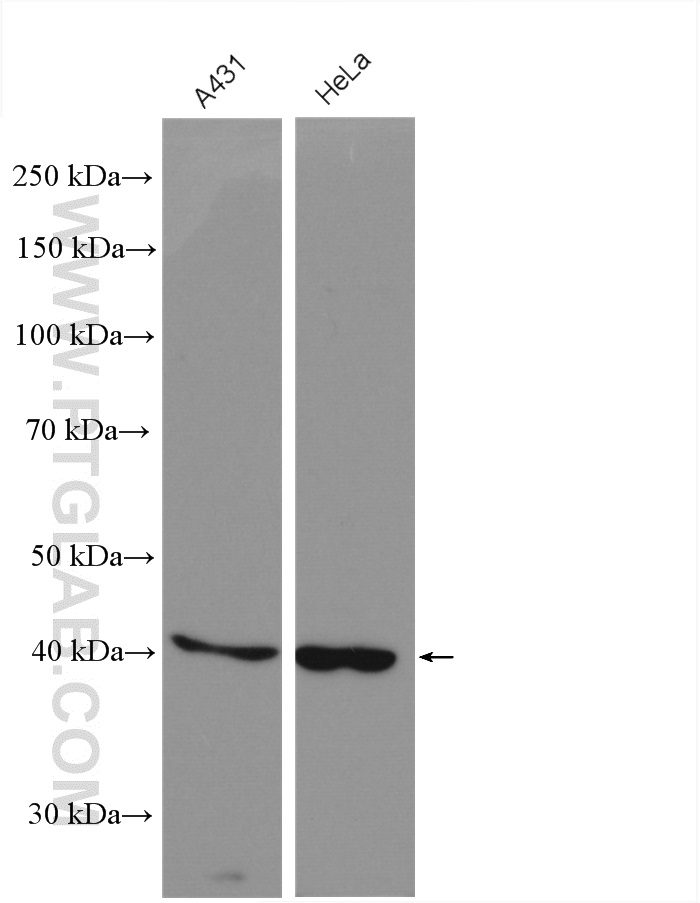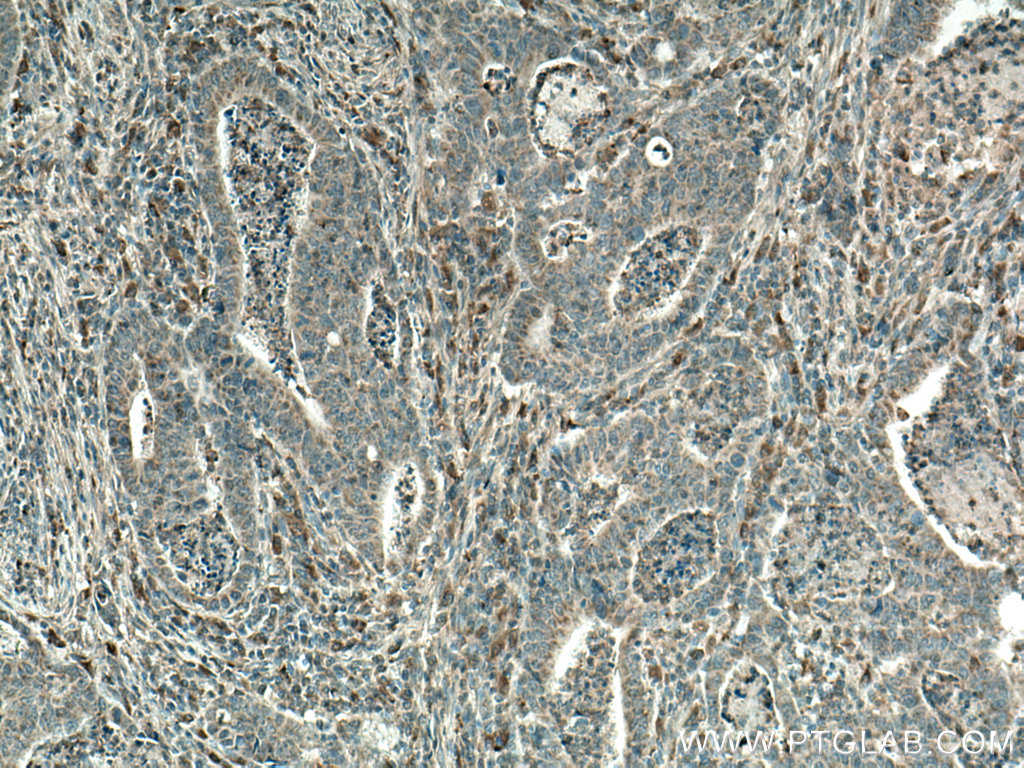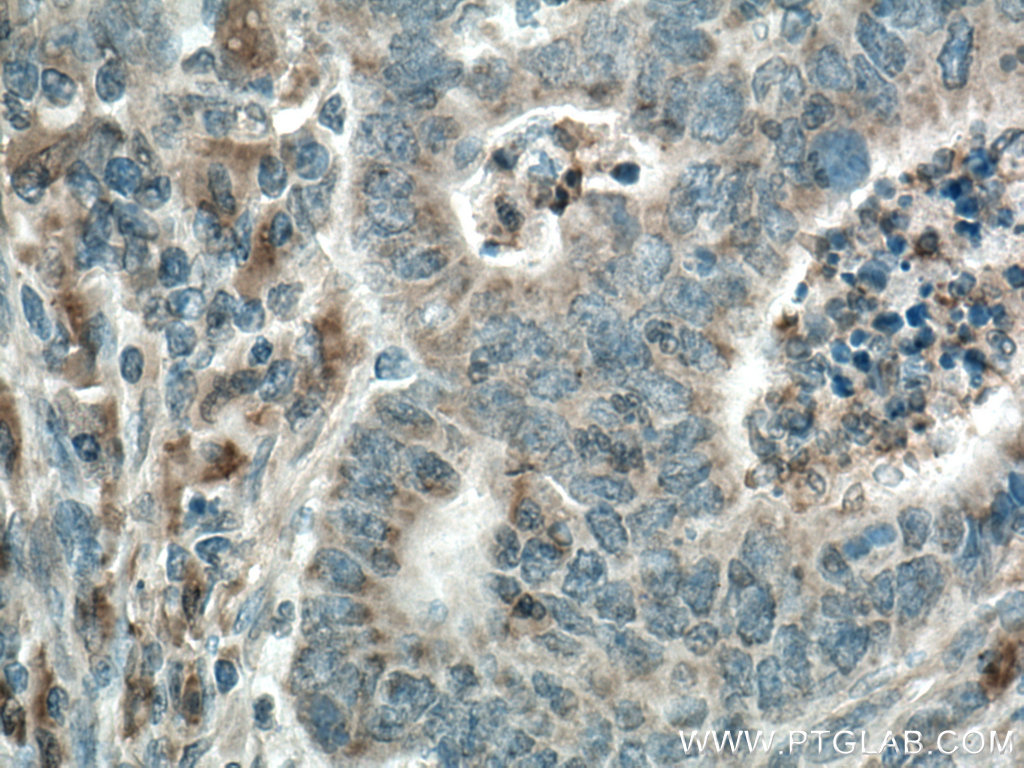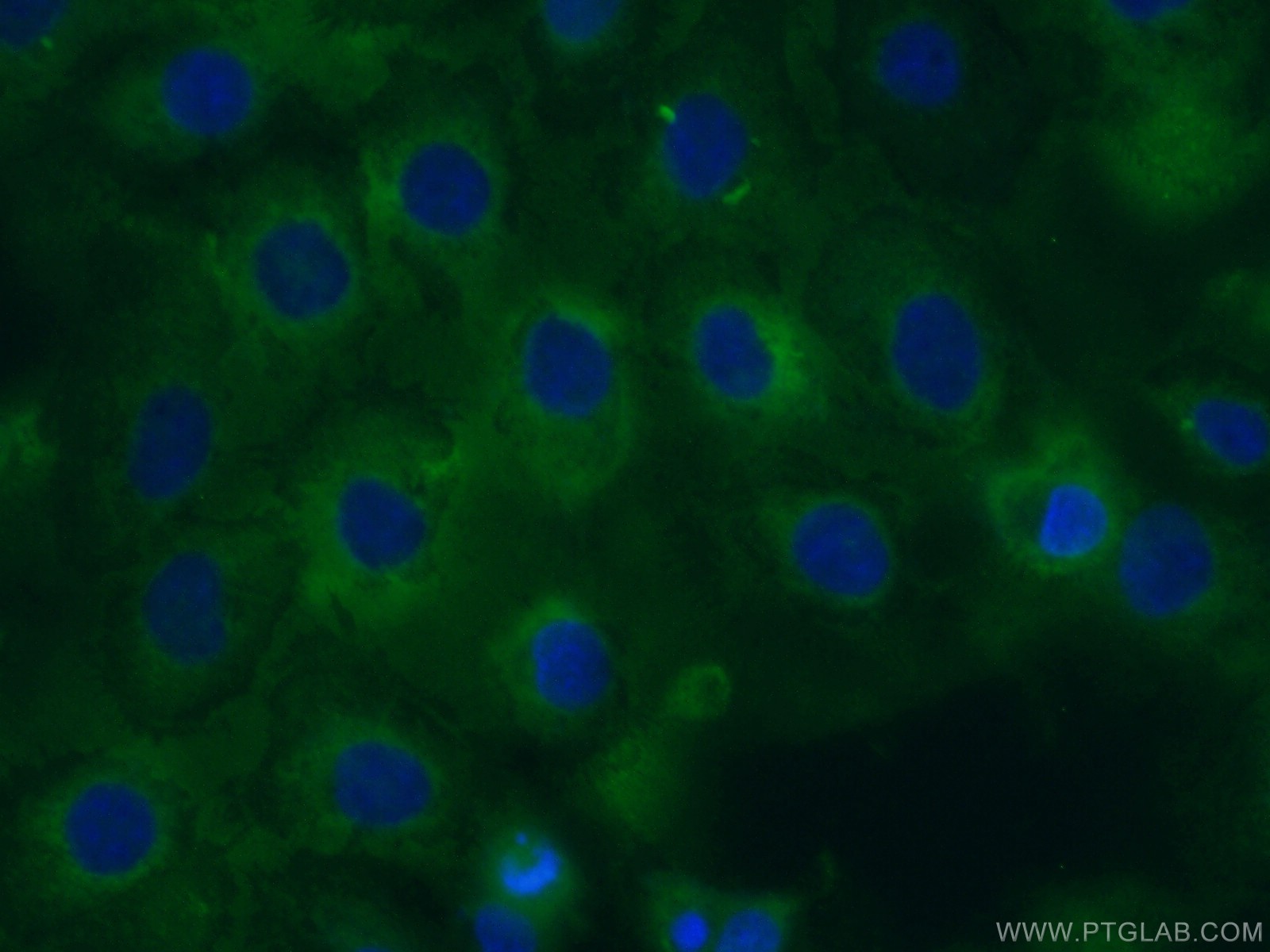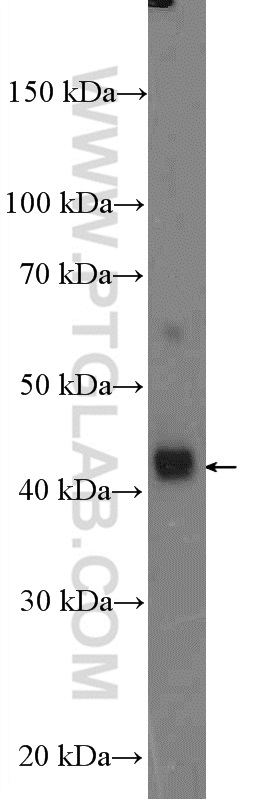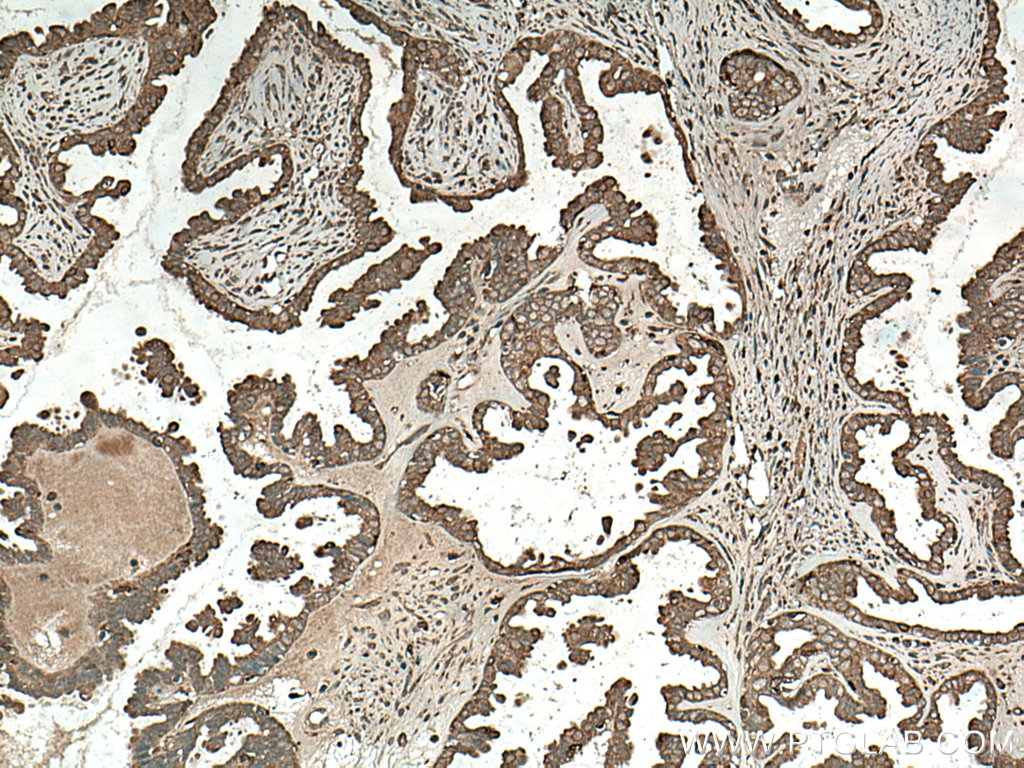- Featured Product
- KD/KO Validated
CYR61/CCN1 Polyclonal antibody
CYR61/CCN1 Polyclonal Antibody for IF/ICC, IHC, WB, ELISA
Host / Isotype
Rabbit / IgG
Reactivity
human and More (2)
Applications
IF/ICC, IHC, WB, ELISA
Conjugate
Unconjugated
验证数据展示
经过测试的应用
| Positive WB detected in | A431 cells, MDA-MB-453s cells, HeLa cells |
| Positive IHC detected in | human colon cancer tissue, human ovary tumor tissue Note: suggested antigen retrieval with TE buffer pH 9.0; (*) Alternatively, antigen retrieval may be performed with citrate buffer pH 6.0 |
| Positive IF detected in | A431 cells |
推荐稀释比
| Application | Dilution |
|---|---|
| Western Blot (WB) | WB : 1:1000-1:4000 |
| Immunohistochemistry (IHC) | IHC : 1:50-1:500 |
| Immunofluorescence (IF) | IF : 1:50-1:500 |
| It is recommended that this reagent should be titrated in each testing system to obtain optimal results. | |
| Sample-dependent, Check data in validation data gallery. | |
产品信息
26689-1-AP targets CYR61/CCN1 in WB, IHC, IF, ELISA applications and shows reactivity with human samples.
| Tested Applications | IF/ICC, IHC, WB, ELISA |
| Cited Applications | IF, IHC, WB |
| Tested Reactivity | human |
| Cited Reactivity | human, mouse, rat |
| Immunogen | CYR61/CCN1 fusion protein Ag25129 种属同源性预测 |
| Host / Isotype | Rabbit / IgG |
| Class | Polyclonal |
| Type | Antibody |
| Full Name | cysteine-rich, angiogenic inducer, 61 |
| Synonyms | CCN family member 1, CCN1, CYR61, CYR61/CCN1, cysteine-rich protein 61, GIG1, IBP 10, IGF binding protein 10, IGFBP 10, IGFBP10, Protein CYR61, Protein GIG1 |
| Calculated Molecular Weight | 42 kDa |
| Observed Molecular Weight | 42 kDa |
| GenBank Accession Number | BC001271 |
| Gene Symbol | CYR61 |
| Gene ID (NCBI) | 3491 |
| RRID | AB_2880604 |
| Conjugate | Unconjugated |
| Form | Liquid |
| Purification Method | Antigen affinity purification |
| UNIPROT ID | O00622 |
| Storage Buffer | PBS with 0.02% sodium azide and 50% glycerol pH 7.3. |
| Storage Conditions | Store at -20°C. Stable for one year after shipment. Aliquoting is unnecessary for -20oC storage. |
背景介绍
实验方案
| Product Specific Protocols | |
|---|---|
| WB protocol for CYR61/CCN1 antibody 26689-1-AP | Download protocol |
| IHC protocol for CYR61/CCN1 antibody 26689-1-AP | Download protocol |
| IF protocol for CYR61/CCN1 antibody 26689-1-AP | Download protocol |
| Standard Protocols | |
|---|---|
| Click here to view our Standard Protocols |
发表文章
| Species | Application | Title |
|---|---|---|
ACS Appl Mater Interfaces A Novel Electrochemiluminescent Immunoassay Based on Target Transformation Assisted with Catalyzed Hairpin Assembly Amplification for the Ultrasensitive Bioassay. | ||
Mol Ther Nucleic Acids The RNA binding protein QKI5 suppresses ovarian cancer via downregulating transcriptional coactivator TAZ. | ||
Cell Death Dis EGFR-PI3K-PDK1 pathway regulates YAP signaling in hepatocellular carcinoma: the mechanism and its implications in targeted therapy. | ||
Cancers (Basel) WISP2/CCN5 Suppresses Vasculogenic Mimicry through Inhibition of YAP/TAZ Signaling in Breast Cancer Cells. | ||
Hum Mol Genet Abnormal activation of yap/Taz contributes to the pathogenesis of tuberous sclerosis complex. |
